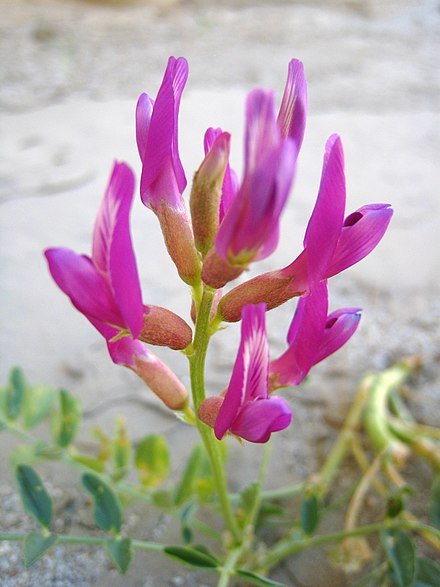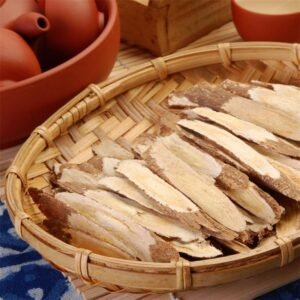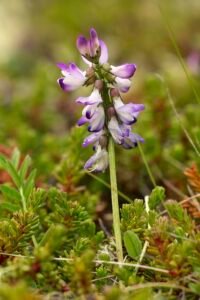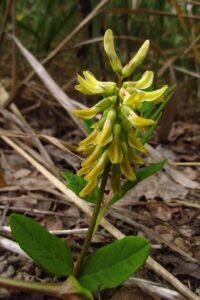Astragalus Boosts Immunity and Energy and Fights Inflammation

Astragalus (Astragalus membranaceus) is treasured for its root, which contains properties that support and stimulate the immune system, fight inflammation, and increase energy and concentration. Astragalus membranaceus root makes a superb adaptogen tonic that promotes long, vigorous, healthy life. It potentiates the healing actions of other herbs, so NutraTea herbalists combined Astragalus root with Licorice, Eucalyptus, Elderberry, Ginseng, and others to create NutraDefence, a powerful immune-boosting tea. NutraDefence is a wonderful immunity tea for everyday, wintertime, allergy season, or to nip a recurring infection (especially respiratory) in the bud. NutraBoost is a blend that contains Astragalus root, Green tea, Ginseng, and other herbs that collectively increase energy, physical and emotional endurance, and focus. Traditional Chinese Medicine (TCM) reveres Astragalus root and has used it medicinally for over 2,000 years. TCM considers it a Qi tonic; according to TCM, Qi is life force or vital energy.
Astragalus root’s main medicinal constituents are:
- Polysaccharides
- Flavonoids
- Saponins like Astragalosides
- Amino acids
- Coumarins
- Trace minerals like zinc, iron, copper, magnesium, and calcium
Boosts Immunity
It’s safe to drink Astragalus tea as a daily tonic to help ward off the common cold and tonify the lungs. It’s also used to speed up recovery when you’re already under the weather, especially with a respiratory infection. Its polysaccharides support and stimulate the immune system. They do so in several ways.They enhance production of immunoglobulins, which protect against harmful viruses, bacteria, and fungi. They boost the number of stem cells in lymph tissue and bone marrow, supporting their growth into active immune cells. Also, polysaccharides stimulate macrophages, a type of white blood cell that kills pathogens and cancer cells and removes cellular debris. Astragalus root helps activate lymphocytes, aka T-cells, which are another kind of white blood cell that helps your immune system protect you from germs and disease.
It also activates a third type of white blood cell called a natural killer cell. Natural killer cells have small particles containing enzymes that kill cells infected by a virus as well as tumor cells. Astragalus root also stimulates production of interferons. Interferons are proteins that direct the immune system to fight germs and cancer cells, “interfering” with illness and preventing it from growing. Furthermore, Astragalus root displays antibacterial activity against Shigella dysenteriae, Streptococcus hemolyticus, Diplococcus pneumonia, and Staphylococcus aureus.
Fights Inflammation
Astragalus root contains flavonoids and saponins, like astragaloside, that are antioxidants. Antioxidants fight inflammation. This minimizes the free radical damage that causes pain, swelling, and in chronic cases, extreme cellular damage and disease. Its antioxidants make it an effective arsenal in preventing heart disease. The antioxidants in Astragalus can also prevent kidney and liver damage caused by viruses and medications. Like most anti-inflammatory medicines, Astragalus root is a moderate diuretic, increasing the urinary flow and flushing out toxins.
Boosts Energy
Astragalus root is an adaptogen, which means it improves the body’s ability to withstand stress. It improves energy levels, endurance, and physical exercise performance. It effectively treats chronic fatigue syndrome. This could be due to the way Astragalus positively affects gut microbiota and reduces inflammation in the nervous system.
Yellow Leader
Astragalus membranaceus is also called membranous milk-vetch root, huang qi in Chinese, ogi in Japanese, and hwanggi in Korean. Astragalus is the name of a very large genus of over 2,000 species, but only three are medicinal varieties: Astragalus membranaceus, Astragalus propinquus, and Astragalus mongholicus. These three species are native to the northern and eastern parts of China, Korea, and Mongolia. They are perennial plants, 16 to 36 inches tall, with hairy stems and aromatic leaves made up of 12 to 18 pairs of leaflets. Their small flowers vary in color, grow in long spikes, and resemble pea flowers. Astragalus’ medicine is in the root, which is usually harvested from 4-year old plants. TCM calls Astragalus “yellow leader,” referring to the color of the plant’s inner root. TCM places Astragalus in the highest category of importance and potency in the foundational TCM text Shen Nong Ben Cao Jing (The Divine Farmer’s Materia Medica Classic).



